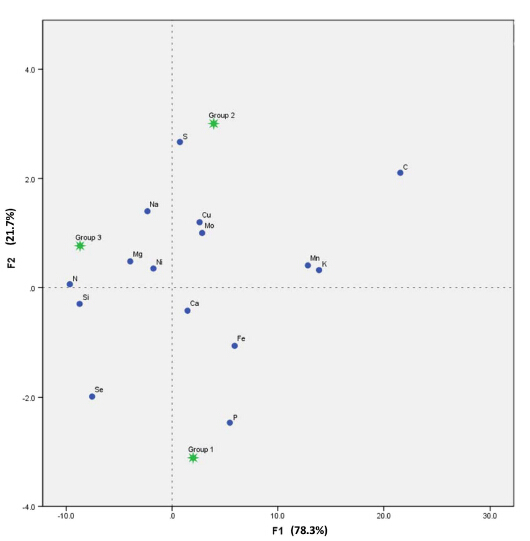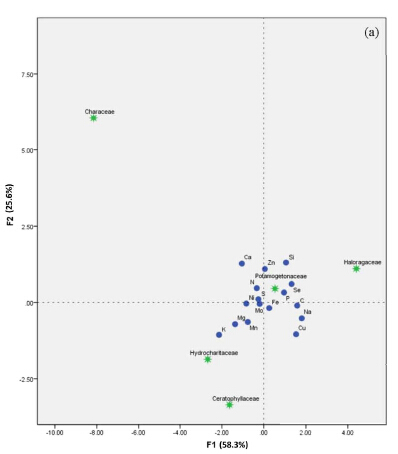Multielement Stoichiometry of Submerged Macrophytes Implemented across Yunnan Plateau Lakes
2015-05-29
Ecological stoichiometry, as a powerful approach for examining the balance of multielement in ecological processes, has enhanced the understanding of trophic transfer and nutrient cycling in aquatic and terrestrial ecosystems.
As for the survival and growth of plant species, it usually requires at least 16 elements. However, the current studies of ecological stoichiometry mainly focus on three macroelements (C, N and P). Therefore, it is necessary to study on other macroelements (Ca, K, Mg and S), essential microelements (Cu, Fe, Mn, Mo, Ni and Zn) and beneficial elements (Na, Se and Si) in terms of ecological stoichiometry.
Submerged macrophytes have important structural and functional effects on aquatic ecosystems, however, element concentrations and stoichiometry of submerged macrophytes in lakes has received less attention, especially in plateau lakes.
Prof. LIU Guihua and associate Prof. XING Wei from Wuhan Botanical Garden investigated 16 elements concentrations in submerged macrophytes and their surrounding environments (water and sediments) across 20 Yunnan plateau lakes to testify the hypothesis: tissue element composition in submerged macrophytes was affected by lake trophic level and taxonomy, and submerged macrophytes had weak stoichiometric homeostasis for the mentioned16 elements.
Canonical discriminant analyses were employed to discriminate 16 elements among 20 lakes. In trophic level groups, multielement concentrations and stoichiometry of submerged macrophytes were obviously affected by lake trophic level. Macroelements (C, N, P, S and Mg) were the most effective elements, suggesting lake trophic level mostly affected tissue macroelement composition in submerged macrophytes.
In taxa groups, submerged macrophytes had unique multielement composition. Ca, K and Se most effectively discriminated among submerged macrophytes taxa groups, revealing taxonomy mostly affected compositions of macroelements and beneficial elements in submerged macrophytes.
The stoichiometric homeostasis coefficients (1/HCa: C) for all taxa of submerged macrophytes were less than zero,suggesting submerged macrophytes in Yunnan plateau lakes had strong Ca stoichiometric homeostasis.
This study is the first to comprehensively document the tissue multielement (16 elements) compositions and stoichiometric homeostasis of submerged macrophytes in plateau lakes, which helps choosing the most appropriate lake management strategy in the future.
Results were published in Scientific Reports entitled “Multielement stoichiometry of submerged macrophytes across Yunnan plateau lakes (China)”. This study was supported by National Natural Science Foundation of China, the National S & T Major Project and Youth Innovation Promotion Association of CAS.

Difference of tissue multielement composition among lake trophic level groups by canonical discriminant analysis (F1: standard canonical function, F2: group centroid function) (Image by WBG)

Differences of tissue multielement composition among submerged macrophytes taxa by canonical discriminant analysis (Image by WBG)